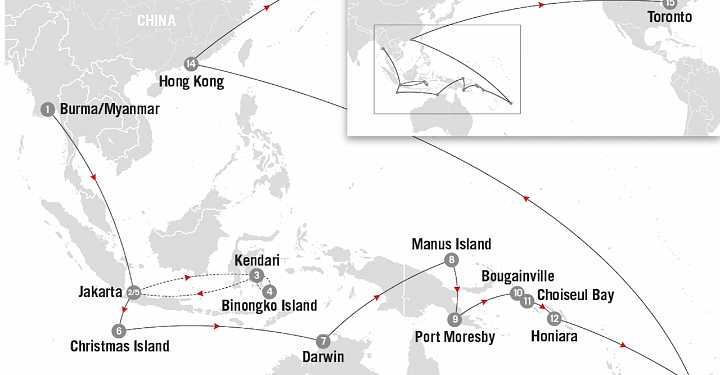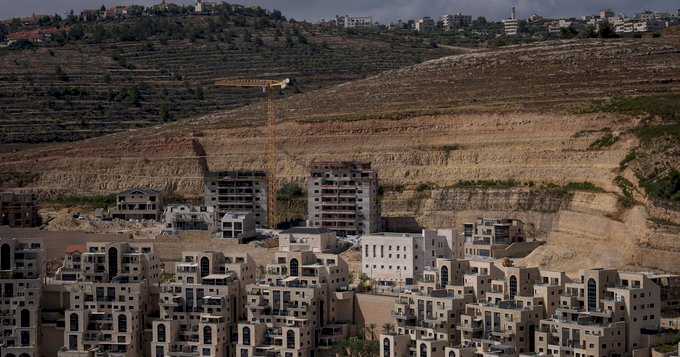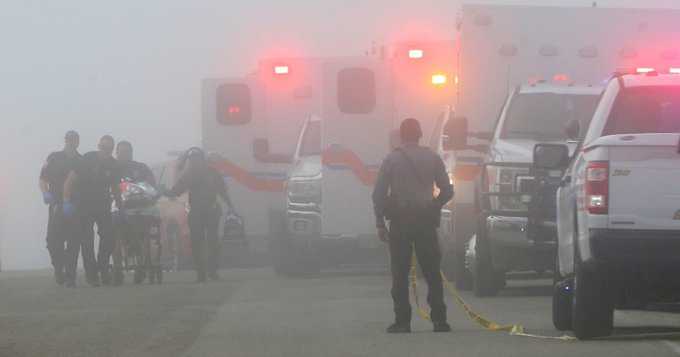The killing of a general in Moscow follows a series of assassinations Russia blames on #Ukraine.
Russia has accused Ukraine of carrying out a number of high-profile attacks against prominent Russians since Moscow invaded its neighbour nearly four years ago.
While Kyiv has hinted at its involvement in some cases, Ukrainian officials have often stopped short of publicly claiming responsibility. In other cases, they have denied all involvement.
On Monday, a Russian general was killed by a car bomb in Moscow, and investigators say they are looking into whether Ukraine was behind the attack. Ukraine has not yet commented on the death of Lt. Gen. Fanil Sarvarov.
Other attacks that Russia has blamed on Ukraine include:
Lt. Gen. Igor Kirillov
Kirillov, head of the military’s nuclear, biological and chemical protection forces, was killed alongside his assistant, Ilya Polikarpov, when a bomb planted on a scooter exploded outside an apartment building in Moscow in December 2024.
Kirillov had been charged in absentia a day earlier by Ukraine’s Security Service, the SBU, with ”ordering the use of banned chemical weapons against Ukraine’s Defense Forces.” The SBU later claimed responsibility for the attack. An Uzbek man was quickly arrested and charged with killing Kirillov on the security service’s behalf.
Lt. Gen. Yaroslav Moskalik
Moskalik, a deputy head of the main operational department of the General Staff, was killed in April 2025. A bomb had been placed underneath his car, which was parked near his apartment building just outside Moscow.
Several days after the attack, Ukrainian President Volodymyr Zelenskyy said in a statement that the country’s Foreign Intelligence Service had informed him of the “elimination of senior command personnel of Russia’s armed forces,” but gave no further details.
A Russian man who previously lived in Ukraine pleaded guilty to carrying out the attack and said that he had been paid by Ukraine’s security services.
Stanislav Rzhitsky
Rzhitsky, a former submarine commander, was gunned down in July 2023 while jogging in Krasnodar, Russia.
Ukrainian media reported that Rzhitsky was one of six submarine commanders able to launch the long-range missiles that hit Vinnytsia, Ukraine, a year earlier, killing 23 people and wounding over 100.
When he died, Rzhitsky was deputy head of a military mobilization office in Krasnodar.
Kyrylo Budanov, head of the Ukrainian Defense Ministry’s main intelligence directorate, denied Kyiv’s involvement in the death. However, the agency also released details about the killing, including the time of the attack and the number of shots fired. A dual Russian-Ukrainian citizen was convicted in the killing in October 2024.
Zakhar Prilepin
Prilepin, a nationalist Russian writer, narrowly avoided death in a car bombing in Russia’s Nizhny Novgorod region in May 2023. His driver was killed, while Prilepin was hospitalized with broken bones, bruised lungs and other injuries.
Prilepin, known for his support of the war, was sanctioned by the European Union.
A Ukrainian was found guilty of the attack in a Russian court and sentenced to life imprisonment. Russia’s Investigative Committee accused him of working on orders from Kyiv.
In an interview with Ukrainian journalists in March 2024, SBU chief Lt. Gen. Vasyl Maliuk declined to take responsibility for the attack, but said he could provide some details, such as Prilepin’s injuries.
Vladlen Tatarsky
Tatarsky, a military blogger, was killed in April 2023 when a bomb tore through a cafe in central St Petersburg where he had been speaking.
Tatarsky supported the war in Ukraine and filed regular reports from the front for his Telegram followers.
Darya Trepova was convicted of the bombing and sentenced to 27 years in prison after she was seen on camera presenting a small statue to Tatarsky that exploded shortly afterward. Trepova testified she didn’t know the gift contained a bomb.
In the March 2024 interview, SBU chief Maliuk also declined to take responsibility for Tatarsky’s death, but describing the blogger as a mouthpiece for Russia who had “paid a karmic price before the Ukrainian people.” He also provided details on the bomb that killed Tatarsky.
Illia Kyva
Kyva, a Ukrainian lawmaker who fled to Russia shortly after the full-scale invasion, was found dead near Moscow in December 2023 with a gunshot wound to the head.
A controversial political figure in Ukraine before the war, Kyva often appeared on pro-Kremlin TV talk shows. A month before his death, a Ukrainian court found him guilty in absentia of treason and sentenced him to 14 years in prison.
Russia’s state Investigative Committee accused an Armenian-born businessman of passing on details about Kyva’s movements to the SBU, state news agency Tass said. However, no charges have been brought directly related to the killing.
Andriy Yusov, a spokesman for Ukraine’s military intelligence, said after Kyva’s death that “the same fate will befall other traitors of Ukraine,” but did not say who was behind the killing.
Darya Dugina
Dugina was killed in August 2022 when a remote-controlled bomb planted in her SUV blew up as she drove on Moscow’s outskirts.
Her father, Alexander Dugin, was widely believed to be the intended target. The philosopher, writer and political theorist is an ardent supporter of the war.
Ukraine denied responsibility for the attack, with Zelenskyy saying Dugina was “not our responsibility” and Kyiv was ”not interested in her.”
Russia’s Federal Security Agency, the FSB, publicly identified two Ukrainian citizens as suspects, but said they had escaped abroad.
___
Katie Marie Davies, The Associated Press
















Global News on Umojja.com